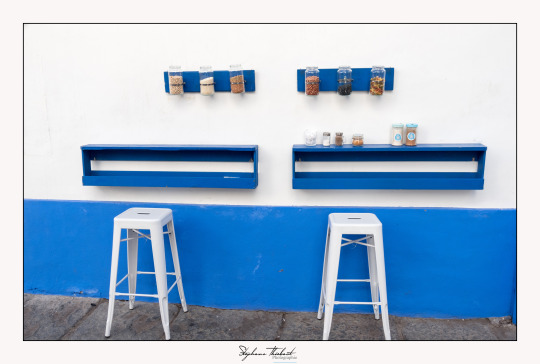#Cordoue
Photo
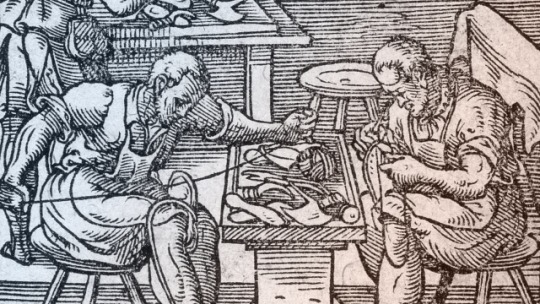
MÉTIER | Cordonniers d’autrefois ➽ https://bit.ly/Cordonniers-Autrefois Jadis, la cordonnerie était un art — les cordonniers étant alors considérés réellement comme des artistes — essentiellement français, et le compagnonnage, qui rimait avec voyage, était très en faveur au sein de cette corporation, non moins que la solidarité ouvrière bien avant l’ère des syndicats
#métier#cordonniers#artisans#chaussures#souliers#bottes#cuir#Cordoue#vachiers#sueurs#savetiers#carreleurs#formiers#talonniers#galochiers
8 notes
·
View notes
Video
Cordoba by Antonio Vaccarini
Via Flickr:
Mezquita World Heritage Site 1994: The Historic Centre of Cordoba
#Cordoba#Cordova#Cordoue#Andalusia#Andalucía#Andalousie#Andalusien#Spagna#Spanien#Espagne#España#Canon PowerShot G5 X Mark II#Antonio Vaccarini#flickr
14 notes
·
View notes
Text
La cathédrale mosquée de Cordoue !
Une pure merveille
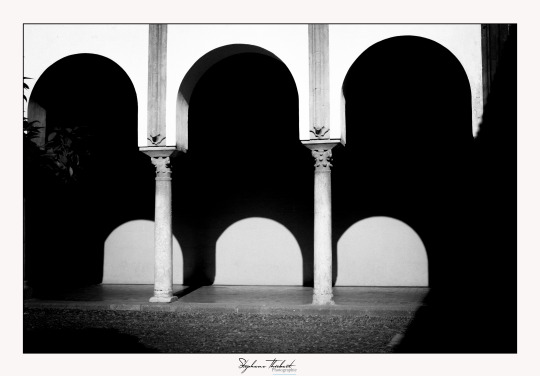
#Cordoue#Espagne#Mosquée#noir et blanc#black and white#architecture#religieux#spain#cordoba#original post#original photographers#french photographer#black and white photography
5 notes
·
View notes
Photo

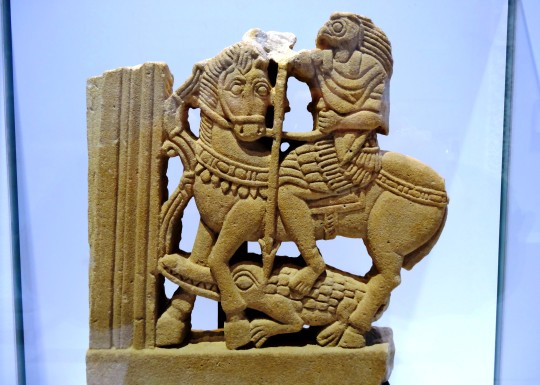
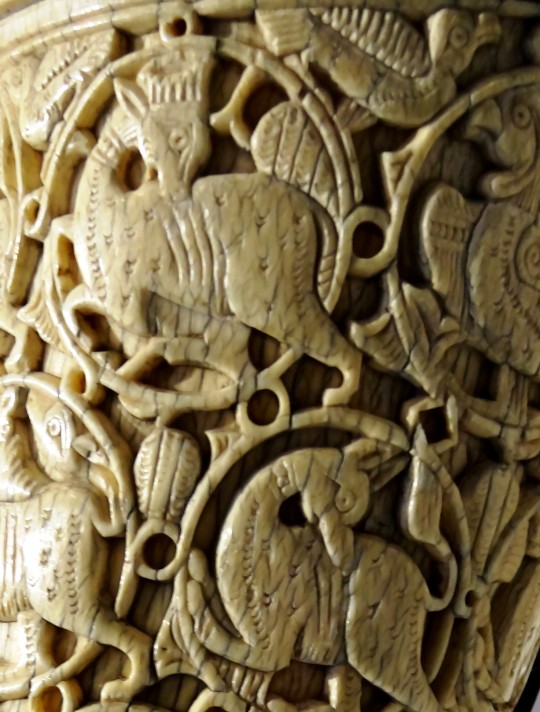



Retour à mon projet de présenter la plupart de mes 53880 photos (nouveau compte approximatif !)
2012. Le Louvre-Lens et sa magnifique Galerie du Temps :
- compagne de la déesse Nanaya - Babylone ,200 ap.J-C.
- Horus romain terrassant un crocodile - Soudan
- olifant- Italie du Sud, 1080 ap. J-C.
- id
- pyxide - Cordoue, 970 ap.J-C.
- globe céleste - Iran, 1315 ap.J-C
#souvenirs#louvre-lens#archéologie#mythologie#nanaya#babylone#déesse#horus#rome antique#crocodile#soudan#syncrétisme#olifant#ivoire#italie du sud#pyxide#cordoue#andalousie#médiéval#globe#globe céleste#iran#perse
7 notes
·
View notes
Text
Le portefeuille de la multiplication d'argent qui vous sort de la pauvreté sans consequences.
Contact et WhatsApp :+229 62 07 89 89

#Séville#Madrid#Barcelone#Malaga#valence#grenade#cordoue#Bilbao#murice#cadix#Saragosse#Tolède#palma#mérida#salamanque#Alicante#Burgos#la Corogne#Pampelune#cuenca#Almeria#Oviedo#Marbella#mijas#orense#huelva#leganes#Albacete
0 notes
Text
Warrior Nun characters as latin quotes
Ava: Aut viam inveniam aut faciam (I shall either find a way, or make one)
Lilith: Veni, Vidi, Vici (I came, I saw, I conquered)
Adriel: Flectere si nequeo Superos, Acheronta movebo (If I cannot bend Heaven, I will raise Hell)
Beatrice: Amor omnia vincit (love conquers all)
Mother Superion: Si vis pacem, para bellum (if you desire peace, prepare for war)
Camila: In omnia paratus (ready for everything)
Yasmine: Fores fortuna adiuvat (Fortune favors the brave)
Jillian: Sapere aude (dare to know)
Michael: Non est ad astra mollis e terris via (there is no easy way from the earth to the stars)
Mary: Familia ante omnia (family over all)
Areala: Non desistas non exieris (never give up, never surrender)
Vincent: Igne natura renovatur integra (through fire, nature is reborn whole)
Duretti: Et tu, Brute? (You also, Brutus?)
Reya: Fiat lux! (let there be light!)
Kristian: Tantum religio potuit saudere malorum (To such heights of evil has religion been able to drive men)
Shannon: Ubi amor, ibi dolor (where there is love, there is pain)
#warrior nun#warrior nun meme#ava silva#sister lilith#adriel#sister beatrice#mother superion#sister camila#sister yasmine#jillian salvius#michael salvius#shotgun mary#areala de cordoue#father vincent#pope duretti#reya#diary pages#warrior nun fandom#wn fandom#im really bitter i didn't get to use oderint dum metuant and alea iacta est#some of these vere surprisingly hard beatrice for example because i'm so disconnected from her#this was harder than i thought fr#I was REALLY tempted to use Deus vult for areala XD#magnum opus of wn memes?#and i'm ✨procastrinating✨
161 notes
·
View notes
Text

ORIENT QUEER : L'ANDALOUSIE
Extraits d'articles :
L’homosexualité était pratiquée dans la société andalouse au XI ème siècle, en dépit des prises de positions extrêmement ferme de l’islam qui condamne sévèrement la sodomie, cette inversion sexuelle était connue et pratiquée en Espagne, comme dans beaucoup d’autres contrées.
L'amour homsexuel (مذكرات mudhakkarat) comme thème littéraire se développe dans le milieu de la poésie dans tout le monde arabe; le juriste et écrivain persan Muhammad ibn Dawud (868 - 909) écrit, à 16 ans, le Libro de la flor, une anthologie des stéréoptypes de la lyrique amoureuse qui donne une large part aux vers homoérotiques.
Ibn Hazm raconte qu’un certain Ahmed b. Kulayb poète et grammairien cordouan, mourut de chagrin, en 426 /1035, parce que le jeune homme dont il était éperdument amoureux restait insensible à ses avances.
Très fréquemment, des andalous musulmans s’éprenaient de jeunes gens, chrétiens ou juifs, qui étaient d’autant plus appréciés que souvent, ils étaient blonds aux yeux bleus. Recherchant parfois des plaisirs interdits par la loi islamique.

DE L'AMOUR DES ROIS
La poésie homoérotique hispano-arabe est la partie du corpus poétique hispano-arabe à caractère homoérotique. La littérature érotique, du moins de la plus grande qualité, s’épanouit au sein de la culture islamique à une époque où l’homosexualité, présentée comme raffinement culturel dans le califat omeyyade, inspire un grand nombre d’écrits, principalement dans la poésie.
La pratique de l’homosexualité est plutôt courante entre les rois andalous et de jeunes hommes. Abd al-Rahman III, Al-Hakam II (qui a une descendance pour la première fois à l’âge de 46 ans avec une esclave basque chrétienne qui se travestit, à la manière de Bagdad, comme si c’était un éphèbe), Abdallah ben Bologhin de la Taïfa de Grenade, le Nasride Mohammed VI al-Ahmar; entre eux, l’Abbadide Al Mutamid ibn Abbad de la taïfa de Séville et Yusuf III du royaume de Grenade écrivent de la poésie homoérotique. Abd al-Rahman III, Al-Hakam II, Hicham II et Al Mutamid entretiennent ouvertement des harems masculins. Les hispano-arabes préfèrent comme compagnons sexuels les esclaves chrétiens et chrétiennes aux femmes et éphèbes de leur propre race, ce qui provoque l’hostilité des royaumes chrétiens. Le martyre du jeune Pélage qui résiste aux désirs d’Abd al-Rahman III, premier calife Califat omeyyade de Cordoue, est reconnu dans sa canonisation.
Dans la communauté juive d’Al-Andalus, l’homosexualité est également courante chez les aristocrates. La culture courtisane et aristocratique y prend la forme d’un individualisme romantique explorant toutes les formes de la sexualité libératrice :
hétérosexualité, bisexualité, homosexualité.
Non seulement le plaisir homosexuel est fréquent, mais il est considéré comme davantage raffiné chez les personnes à l’aise et cultivées. Les prostitués sévillans du début du xiie siècle auraient par ailleurs touché davantage de revenus que leurs camarades féminines et auraient pratiqué auprès d’une classe plus aisée.

Sources :
Before Homosexuality in the Arab‐Islamic World, 1500–1800 is a 2005 book by Khaled El-Rouayheb, published by the University of Chicago Press.
42 notes
·
View notes
Text
Catherine Bernard’s other fairytale: The Rosebush Prince
When undergoing my little study of Riquet with the tuft, I made a post about the literary fairytale that preceeded Perrault’s version - and in fact, the fairytale to which Perrault was answering with his own Riquet. It was Catherine Bernard’s own “Riquet with the tuft”. And Catherine Bernard was a prominent woman of letters in these times, who notably had an influence over Perrault fairytales... Though she actually barely published any fairytales at all. She only published two of them to my knowledge, both included inside her novel “Inès de Cordoue” (1696) - and since I have looked at one of the two, Riquet with the tuft, here, I thought, why not finish the package deal and take a look at the other fairytale of Catherine Bernard: Le Prince Rosier, The Rosebush Prince.
Here is the story:
Once upon a time, there was a queen who ruled over a kingdom you cannot find on any maps. She was the widow of a king she dearly loved, but hopefully her pain was balanced by their only daughter, named Florinde. However one day, as all the queen and all her handmaidens were in the bedroom of the little princess, a little ivory chariot arrived, dragged by six butterflies of a thousand colors, and on it there was a woman just as small as the chariots and the butterflies. People “suspected” that she was a fairy, and before disappearing she left them with a written note saying: “Florinde is born with a great beauty, but her misfortune will be extreme, if she ever loves one day the lover she will not see.”
This surprised and confused everyone, as you can expect, and the queen understanding that she had to face the “whims of love and fate united”, decided to protect her daughter the best she could - to avoid the prophecy, long before Florinde was “in age to love”, she made her know the face and identity of all the neighboring princes she could ever marry one day. All... except one, who was actually hidden to the world. This prince was the son of a widow king, who had dreadfully suffered when his wife was alive because she made him terribly jealous. So, to avoid such a rocky marriage again, when he took a second wife he took one that he was sure would never make him jealous in any ways... But unfortunately for him he found himself in the position situation, as SHE was the massively jealous one. After knowing both extremes of the passion that was love, the king decided that marriage was an awful thing, and sought to prevent his son from ever knowing such a horror -he had his son the prince raised in a castle far away from the world and from any women. The prince had there all the entertainments he needed, and he was taught in all the sciences - as long as they didn’t brought him to the topic of women or love ; but still the portrait of Florinde reached him one day. “By fairy means” the narrative precises, the portrait ended up one day “under his feet” - as in he literaly was walking around when he found the portrait lying on the road before him. Looking at it, the prince felt love for the first time, which was a very unusual thing for him as he was used in physical sports and intellectual thinking, and not to anything closely resembling feelings/attraction.
So the prince decides to find to whom belongs this portrait, and suddenly feels that this isolated palace where he had been always happy is now a prison. He leaves secretely without informing anyone, but as soon as he starts his journey the fairy of the opening scene appears and warns him that if he continues, he will suffers misfortunes and a bad fate from which people tried to shield him from.
We cut back to Florinde, whose mother organized a huge tournament with all the princes of the kingdoms nearby, in hope she will pick one of them as her husband, but Florinde doesn’t choose any. On one side she doesn’t feel love for any of them, though she admires their beauty and talent ; on the other side she notices that they all have a big crush on her, and she fears of making “many people miserable by making one happy”. The queen/mother then had the princes return to their kingdoms, and started to worry - her daughter did not love any of the princes she had seen... meaning the prophecy could still be realized.
Florinde, tired with the court, is allowed to go rest on her own in a countryside house, and as she was walking around one day, in the garden, she noticed a rosebush that was greener and more flowery than others - and its branches shivered and moves as she approached, as if to bow to her. The princess was amazed and touched by this gesture - she returned several times in the garden, and each time the rose-bush bowed to her. The princess tried to pick up a red rose, but she pricked her finger badly. The following day the rose-bush bowed even more, so much the princess forgot the incident of the thorn - but as she go close to it, she entangled herself in its branches. She tried to free herself, while the rose-bush tried to hold her, and when she finally escapes the branches she heard sighs and sighing coming from the plants’ leaves. And, much to her amazement, the rose-bush starts to speak with a masculine voice, telling her she gave him the power to speak, and revealing his tale...
We understand as the story begins that this prince is the same we were described in the beginning - and we pick up after the abrupt narrative cut. As it turns out, the fairy turned him into a rose-bush, and said he will stay under this form until he will be loved by the most beautiful person in the world. At this revelation something “more serious” replaces in her heart the joy of seeing the bush bow, and she suddenly finds him audacious to have tried to take her in his branches like that, So she leaves the bush with a feeling of pity for him, and anger at him just suddenly trying to force her to love. But she ultimately decides to forgive because “how can one be mad at a rose-bush?” (I didn’t make it obvious yet, but the story is quite humoristic in tone, with little throw-away jokes like that scattered around, poking fun at the bizarre supernatural of the tale).
The princess returned to the garden day after day. At first she just listened to its complaints without getting close to it ; then she started to talk to him but only to comfort him about his metamorphosis, and nothing else. Seeing that the weather could damage the plant, she had a small marble cabinet built around it. She started to visualize and imagine the rose-bush as a good looking human prince in her mind, and she talked more and more with him. She got more open about talking of love, because she thought that the words of a rose-bush could ultimately do no harm ; meanwhile the rose-bush was so eloquent he convinced Florinde of his great love for her. Slowly, the bush became all she could think about, and where she went to by force of habit - but the prediction of the fairy kept haunting her, and she feared of “loving what she hasn’t seen”. She was split, sometimes not wanting to return the bush to its human form, and sometimes wanting it.
But the queen wanted to see her daughter back, and gave her the order to return to the palace. Upon realizing she had to leave the rose-bush and be separated from him, the princess became “like thunderstuck”, and started crying over the plants’ leaves - she cried so much and so sincerely that the spell was broken, and the rose-bush disappeared, replaced by a “charming prince”. (We even have a funny line pointing out how due to his immense surprise and happiness he loses temporarily the usage of his senses, and in a paradoxical way, while he just regained his human attributes, his great joy makes him return to an immobility that looks almost like a leftover of his previous plant form). Florinde, upon seeing the prince in his true form, feels her love grow stronger, but bashfulness/decency prevents her from revealing anymore, and she even regrets that by the breaking of the spell her feelings were openly revealed.
The princess returned to the court with the prince, and the queen (who didn’t know anything about the rose-bush story) allows him to try and win the hand of her daughter, but as it turns out, it becomes much more difficult... The prince regrets his plant form because now he can only talk and try to seduce the princess in public, constantly surrounded by an audience, and while obeying numerous complicated conventions and a full etiquette. Florinde, meanwhile, is scared of the whole situation because she constantly has “the oracle of the fairy” in her mind, so while the prince pushes forward the wedding plans, she tries to push them back... Florinde ends up asking her mother for help to “put the prince to the test” (in truth she just wants to buy time) - she wants to get away from him for a while, to test his faithfulness and “constancy”, see if he will flirt with anybody else meanwhile. Florinde is a bit more honest with the prince: she tells him that she does love him, but that she fears too much the upcoming misfortunes to be with him ; she recognizes that the best solution for her would be to break up and never see him again, but due to her loving him she cannot reject him entirely - so, to clear things up, she wants to put him to the test. She explains to him that she wants to make sure his love is real, and not just a superficial feeling born out of the whole bizarre situation. She asks him to go to the Island of Youth, until he will be called back to the court - so that far away from each other, their love can reveal its true nature. The prince thinks being separated from Florinde will be like the death of him, and he cries in pain ; Florinde, recognizing by these tears that he truly loves her, in turn also cries and runs in her bedroom, telling the prince to just go and return when he is called.
The Prince leaves for the Island of Youth, sick of an heartache, but when he arrives the beautiful, fresh air, and the smell of the spring flowers heal him. He is welcome by little Cupids flying everywhere, throwing roses or orange-tree-flowers at him ; and he is brought to the throneroom of the queen of the island. She is just a fourteen year old girl, beautiful, naive and joyful, surrounded by a thousand little Cupids - and this island and its queen are so beautiful and joyful the narration recognizes it is a good way to put the prince’s love to the test. The Queen of Youth is unwed, because she only wants a husband of her age who is gallant - and unfortunately she never found such a boy up until now. The prince was 24 years old, so deemed much too old by the Queen (in the Island of Youth, the prince was treated the same way middle-aged men are treated in the “normal” world). However, despite that, the Queen suddenly starts to look “favorably” at the prince, thinking that his beauty and talents are enough to make one forget just how OLD he is (it is to the point that for the maidens of the island, ten years is equivalent to a century). The Queen started to throw him seducing looks, meaningful words, little gifts here and there - that the prince pretended not to see. But soon she became more upfront, asked for a wedding with him, and offered him all the pleasures and graces of the world, as well as the greatest and most precious wealths of the universe. She worked her seduction so well the prince slowly started to forget Florinde...
But what was Florinde doing meanwhile? She was doing badly. After just one day without her prince, she felt “the horror of living without the one you love”. She however fought her own feelings. She thought: “I have fallen in love without seeing - do you really want to marry without knowing?”, hence why she needs to put the prince to the test... But days after days, the suffering of absence mixed itself with fear and jealousy, so she ultimately sent a letter to the prince asking him to return because she is “too afraid” of losing him, she imagines he must be in the same pains as her, and she begs him to come back. And this letter arrives precisely when he was starting to forget Florinde. Hopefully for the princess, the prince had received an “austere education” and hadn’t been “spoiled by the world”, so he thinks a lover should not be unfaithful - and despite his attraction for the Queen of Youth, he leaves her island to return to the court. But as he is leaving the island he notices papers everywhere... The Queen of Youth had published throughout her island a “WANTED” poster - she promises all she had promised the prince (riches, pleasures, graces) to anyone that can be bring her the prince... dead or alive. Immediately the prince “heals” from his attraction to the Queen and flees from the island, returning to Florinde.
The prince and Florinde married, and the prince soon became king due to the death of his father. He took his wife in his own kingdom, where they lived happily... for a short while. The narration points out that if they had stayed into an “honest indifference” they would have been happy, but “people in love are not as reasonable as other people”, which is why “the worst couples are those used to love”. What does the narrator mea by that? Well... the Prince makes a mistake. “Out of laziness”, he tells to Florinde his “light weakness” for the Queen of Youth. Florinde became angry and got into a feud with him so bed “it looked like she wasn’t his wife naymore”. The king was shocked and disturbed by this, so she complained of it and sought comfort with ladies of his court. Florinde spied on her husband, and discovering her husband’s activities, she insulted him. The king, so tired of being “harassed by her fury”, asked the fairies to be transformed back into a rose-bush, and the fairies obliged. Florinde, still jealous, couldn’t stand anymore the smell of the roses - because this smell was sure to re-ignite and re-create her love. “And it is since this day that the smell of roses make people faint.”
The end.
~~~~~~~~~~
Yep! It was a parody-fairytale all along! Though “parody” might be too anachronistic of a word, since the fairy tale genre wasn’t even named yet, and Catherine Bernard’s works were one of the earliest literary fairytales in the history of French literature (not the first one, but close to it). Which truly highlights the point that many people ended up forgetting (even the French writers of the time who tried to imitate the “first generation” storytellers) - the first French literary fairytales were filled with humor. A dark humor, but humor nonetheless.
It is quite interesting, when comparing this with Bernard’s other fairytale, to see that for her the typical idea of a fairytale was one without a happy ending. We find all the other key elements - the main love story, the fantastical transformations, the presence of fairies and gnomes... But in both tales, the main love story ends up badly and there is no happy ending, just bitterness. A true case of “love only brings misery”.
#fairy tales#fairytale#the rosebush prince#catherine bernard#french fairytales#french fairytale#literary fairytale
10 notes
·
View notes
Text

Catherine Bernard
How was Catherine Bernard an awesome ace? Well, Catherine Bernard was a 17th century poet, novelist, playwright, and the first woman to write a tragedy performed by the Comédie-Française. Not much is actually known about her as we don’t know her exact day of birth or death, nor is there any evidence of a baptism (most likely due to her conversion to Catholicism.) Catherine is believed to be asexual due to her lack of a partner (which was very uncommon for a woman at the time) and the content of her writing.
Catherine won numerous poetry prizes despite most of her work being attributed to male authors. She never married and had no record of ever having a romantic or sexual partner.
Her biggest piece of literature perceived as an asexual commentary was a fairytale called Inès de Cordoue, which was part of a series called Les Malheurs de l'amour (The Misfortunes of Love).
In the first novel-The Rosebush Prince – we follow protagonist princess Florinde who had been prophesied to fall in love with someone she couldn’t see. Out of fear, her mother arranges a tournament for local princes to compete in. When it is time for Florinde to make her choice, she doesn’t choose anyone in fear of upsetting the others. Her mother respects her decision and sends the princes home. Some time later, Florinde retires to the country where she finds a rosebush that turns out to be a prince. The rosebush prince had already fallen madly in love with Florinde’s portrait, and as the days go on the grow closer and closer. As the princess is called back to her mother’s court, her tears fall upon the rosebush and turn him back into a prince. Florinde’s mother is happy to let the two marry, but Florinde herself worries that the prince has never seen another young woman. So, she sends the prince to the island of youth where he temporarily falls in love with the youth queen. When he returns and marries Florinde, he admits his feelings about the Queen of Youth. Florinde is reasonably angry and the prince’s first reaction is to run to the ladies of the court for “comfort”. When Florinde finds him, he asks her to turn him back into a rosebush. The underlying message of the tale is clear: love strong enough to break a curse may only go in one direction and infidelity is always a possibility.
While we cannot confirm Catherine’s identity, we can infer from what records we have of her and how she questioned love itself in many stories like these, that she may have been a very awesome ace.
9 notes
·
View notes
Video
Cordoba by Antonio Vaccarini
Via Flickr:
Patios UNESCO: Lists of Intangible Cultural Heritage 2012
#Cordoba#Cordova#Cordoue#Andalusia#Andalucía#Andalousie#Andalusien#Spagna#Spanien#Espagne#España#Canon PowerShot G5 X Mark II#Antonio Vaccarini#flickr
1 note
·
View note
Text

No picturein the book but i think she means this
Which im sorry to say looks like an elephant the way that taxidermied swedish lion looks like a lion
4 notes
·
View notes




